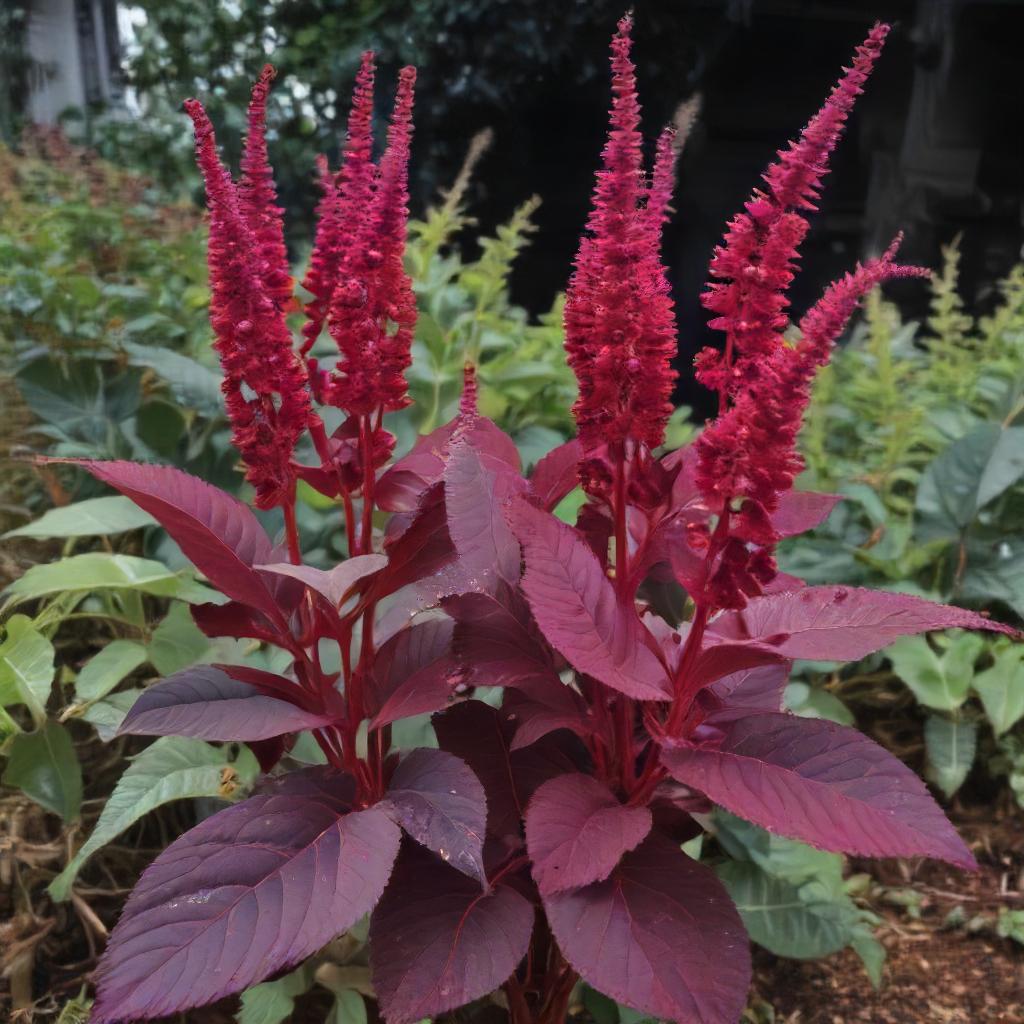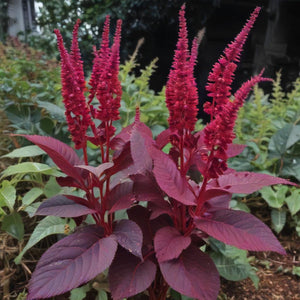- Hardiness Zone: 2-10 Annual
Seed Depth: 1/4 inch
Seed Spacing: 8–12 inches
Row Spacing: 12–18 inches
Sunlight: Full sun to partial shade
Days to Sprout: 7–14 days
Days to Maturity: 60–75 days (greens), 90–120 days (grain)
Growth Habit: Upright, bushy annual
Sunlight: Prefers full sun but tolerates partial shade in hotter climates.
Soil Type: Thrives in well-drained soil with a pH of 6.0–7.5. Adding compost boosts fertility and promotes healthy growth.
When to Plant: Sow seeds directly outdoors after the danger of frost has passed, as amaranth prefers warm soil.
Direct Sowing: Plant seeds 1/4 inch deep, spacing them 8–12 inches apart in rows 12–18 inches apart. Thin seedlings as they grow.
Indoor Sowing: Start seeds indoors 4–6 weeks before the last frost. Transplant seedlings when they are 2–4 inches tall.
Succession Planting: Sow every 2–3 weeks for a continuous supply of tender greens.
Watering: Water deeply but infrequently, allowing soil to dry slightly between waterings. Established plants are drought-tolerant.
Fertilizing: Apply a balanced fertilizer or compost at planting to encourage strong growth and vibrant leaves.
Pruning: Harvest leaves regularly to encourage new growth and prevent plants from becoming leggy.
Pest and Disease Control: Generally pest-resistant, but monitor for aphids and flea beetles. Use organic pest control methods as needed.
When to Harvest: For greens, harvest young leaves when plants are 6–12 inches tall. For seeds, wait until seed heads are fully mature and dry, typically 90–120 days after planting.
How to Harvest: Snip leaves and stems with scissors for greens. For seeds, cut mature seed heads and thresh to collect seeds.
Seed Collection: Allow seed heads to dry thoroughly before threshing to ensure maximum viability.
Storing Seeds: Store seeds in an airtight container in a cool, dry place.
Why You’ll Love It
Midnight Red Amaranth is a stunning heirloom grown for both its edible leaves and ornamental appeal. The rich, dark red foliage adds dramatic color to garden beds while offering a tender texture and earthy flavor in the kitchen. Young leaves are great in salads or sautéed, and mature plants produce striking flower heads loved by pollinators. A fast-growing warm-season crop that thrives in heat, drought, and poor soil — perfect for gardeners who want beauty and bounty.
Plant Characteristics
Height: 3–5 feet
Growth Habit: Upright with branching stems and dense, red flower plumes
Leaf Type: Oval-shaped, burgundy-red leaves with soft texture
Days to Maturity: 40–50 days for greens; 90–100 days for seed/flowers
Hardiness: Warm-season annual
Flavor and Culinary Uses
Flavor: Mild, earthy, and slightly nutty — similar to spinach
Culinary Uses: Use young leaves in salads, stir-fries, and sautés. Mature leaves can be steamed or added to soups. Also grown for microgreens or ornamental use.
Companion Planting Tips
Good Companions: Corn, peppers, eggplant, and tomatoes
Avoid Planting Near: Tall, aggressive crops that may overshadow young seedlings
Bonus Benefit: Drought-tolerant, nutrient-dense, and attracts beneficial insects and pollinators when in bloom
Common Issues and Solutions
Leaf Spots or Yellowing: Avoid overwatering and provide good airflow
Stunted Growth: Ensure full sun and avoid nutrient-deficient soil — amend with compost if needed
Pests: Generally pest-resistant, but young seedlings may need protection from flea beetles
Seeds Per Packet
| 500mg | Approximately 620 |
| 1g | Approximately 1,240 |
| 3g | Approximately 3,720 |
| 5g | Approximately 6,200 |
Why You’ll Love It
Midnight Red Amaranth is a stunning heirloom grown for both its edible leaves and ornamental appeal. The rich, dark red foliage adds dramatic color to garden beds while offering a tender texture and earthy flavor in the kitchen. Young leaves are great in salads or sautéed, and mature plants produce striking flower heads loved by pollinators. A fast-growing warm-season crop that thrives in heat, drought, and poor soil — perfect for gardeners who want beauty and bounty.
Plant Characteristics
Height: 3–5 feet
Growth Habit: Upright with branching stems and dense, red flower plumes
Leaf Type: Oval-shaped, burgundy-red leaves with soft texture
Days to Maturity: 40–50 days for greens; 90–100 days for seed/flowers
Hardiness: Warm-season annual
Flavor and Culinary Uses
Flavor: Mild, earthy, and slightly nutty — similar to spinach
Culinary Uses: Use young leaves in salads, stir-fries, and sautés. Mature leaves can be steamed or added to soups. Also grown for microgreens or ornamental use.
Companion Planting Tips
Good Companions: Corn, peppers, eggplant, and tomatoes
Avoid Planting Near: Tall, aggressive crops that may overshadow young seedlings
Bonus Benefit: Drought-tolerant, nutrient-dense, and attracts beneficial insects and pollinators when in bloom
Common Issues and Solutions
Leaf Spots or Yellowing: Avoid overwatering and provide good airflow
Stunted Growth: Ensure full sun and avoid nutrient-deficient soil — amend with compost if needed
Pests: Generally pest-resistant, but young seedlings may need protection from flea beetles
Seeds Per Packet
| 500mg | Approximately 620 |
| 1g | Approximately 1,240 |
| 3g | Approximately 3,720 |
| 5g | Approximately 6,200 |






Share and get 15% off!
Simply share this product on one of the following social networks and you will unlock 15% off!